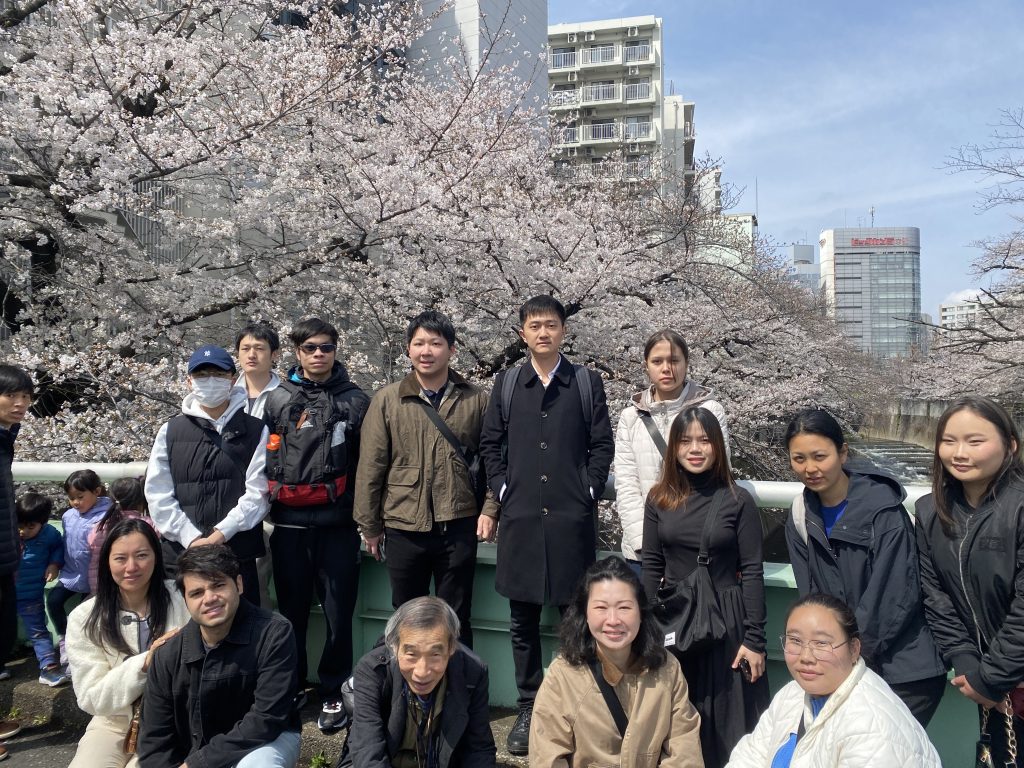
With more than 600 different species of cherry trees, Japan is internationally known for its sakura season. This very special time of the year attracts not only locals but also many visitors coming from all over the globe. One key word during that season: hanami (花見) which combines the kanjis for “flower” and “look”. This practice, which is several centuries old, still lives on today and brings together all generations for about a week to enjoy the sight of cherry blossoms.
What does Sakura mean in Japanese ?
You might have heard it in your own country as well, as the word is spreading internationally, but do you know what’s the meaning of “sakura”? This word means “cherry blossom” and can be used to talk about cherry trees as well. However, these cherry trees do not necessarily produce cherries. Cherries are called “sakuranbo” (さくらんぼ) in Japanese and only grow on certain types of cherry trees. So do not expect to be able to go cherry picking during sakura season in Japan!
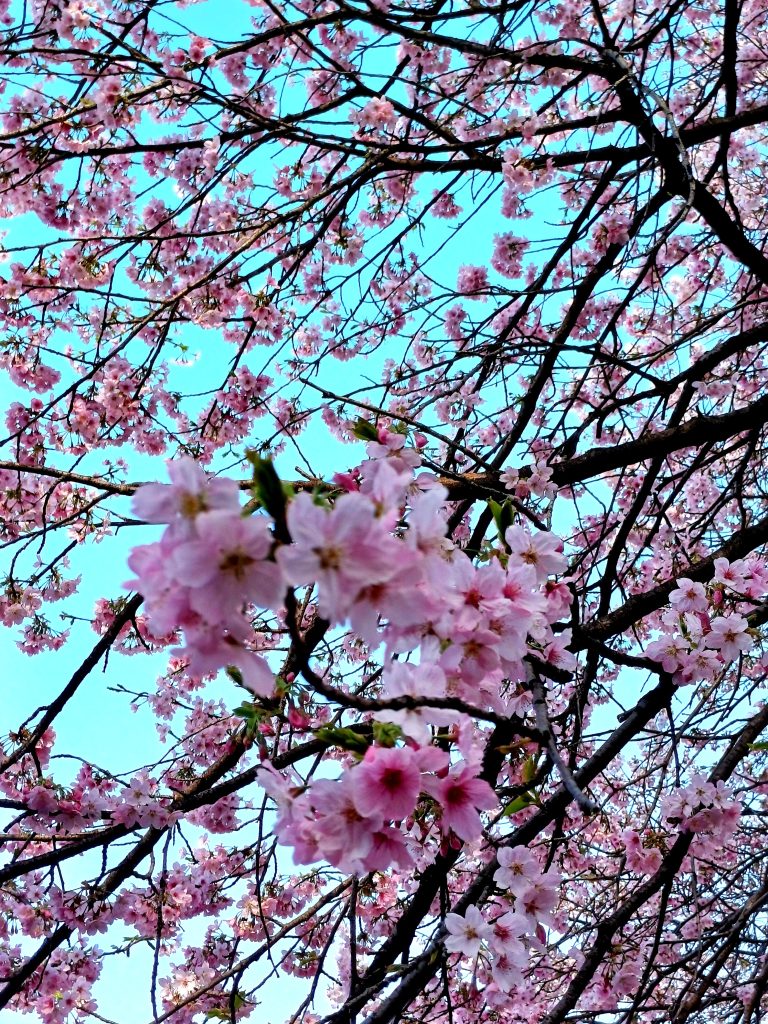
How to distinguish cherry blossoms from other flowers?
Cherry blossoms, especially the famous sakura, can be confused with a few other flowers due to their similar appearance and color: – plum blossoms (prunus mume): these blooms are similar in shape and size to cherry blossoms but typically appear a bit earlier in the season (January to March), while cherry blossoms bloom in spring. Plum blossoms tend to have a more fragrant, delicate scent and come in shades of white and pink.
– peach blossoms (prunus persica): these flowers are also in the Prunus family and resemble cherry blossoms. Peach blossoms can be distinguished by their slightly larger size and often deeper pink color, while cherry blossoms are usually lighter and less vibrant.
– almond Blossoms (prunus dulcis): almond flowers look quite similar to cherry blossoms, especially the light pink variety. However, almond flowers typically have a more elongated petal shape and often grow in clusters.
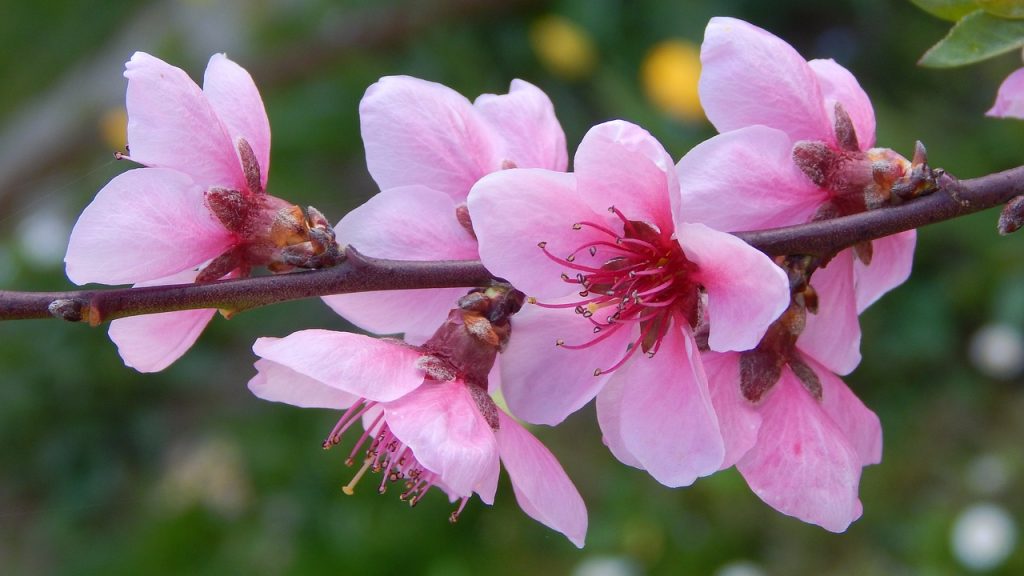

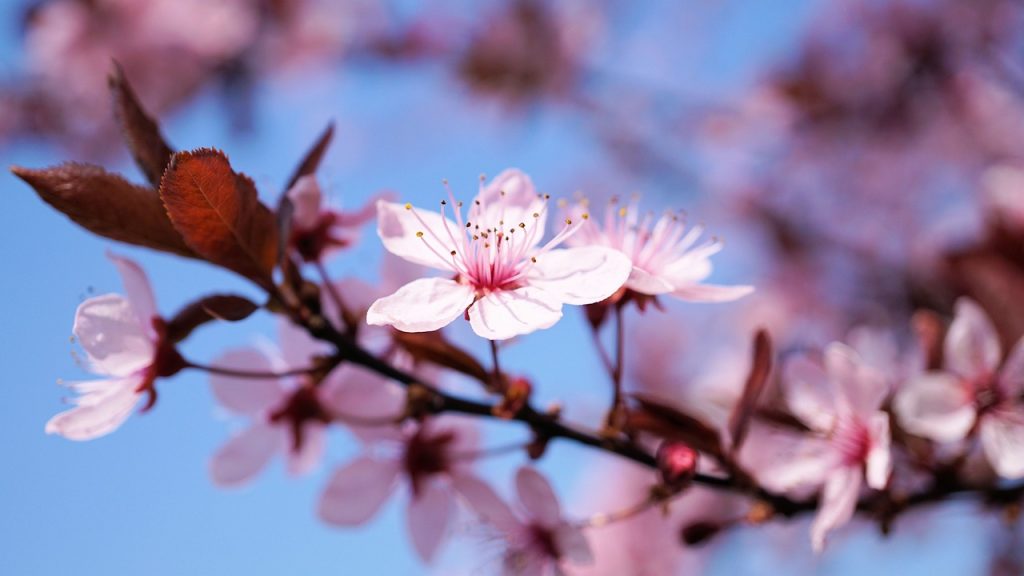
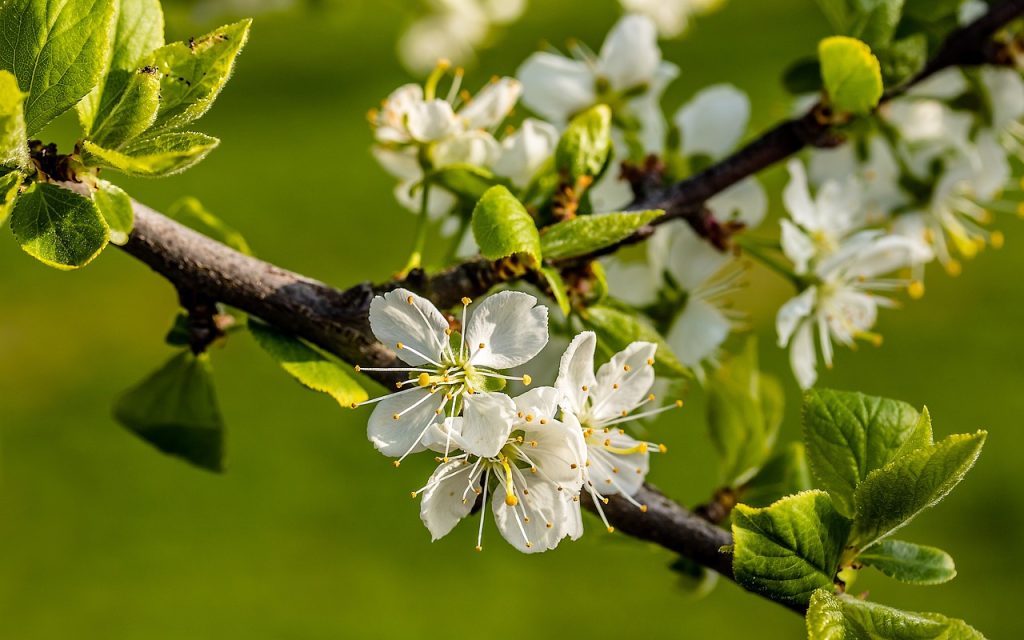
Why is cherry blossom season so important in Japan?
If blossoming cherry trees have such an important emotional value and are a specific symbolism in Japan, it’s not only because of their beauty and their great number. In fact, the bloom only lasts for a short while. The blossoms, that commonly start opening between the end of March and the beginning of April, reach full bloom one week after opening and will slowly start falling off during the following days. Consequently, sakura season generally last around 10 days at most. Sakura are significant in Japan because they evoke the ephemeral state of things and reminds us to appreciate life while we have the chance. This concept of ephemerality called “Mono no aware” (物の哀れ), similar to memento mori in Europe, hails from Buddhism even though the term itself was first formulated by the writer Motoori Norinaga. For that very reason, the word “sakura” is quite often mentioned in Japanese literature, arts and popular culture to allude to the concept of “mono no aware”.
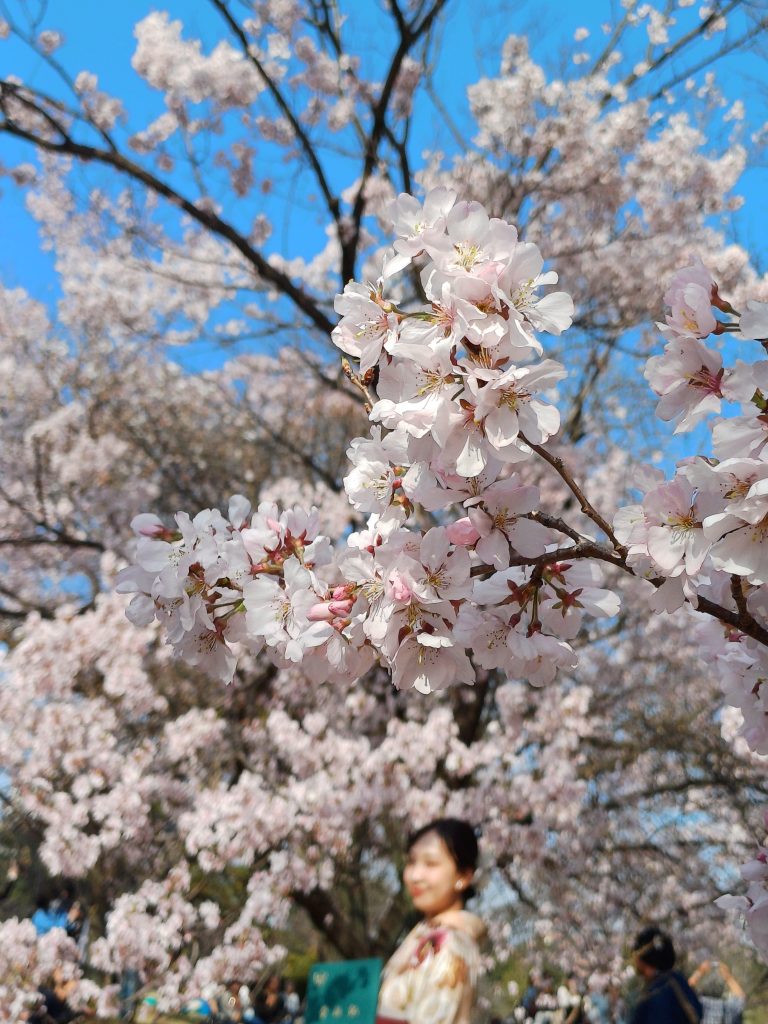
Sakura traditions: Hanami (but not only)
As soon as the first flowers start blooming, sakura festivities can start! The most important and most famous one being “hanami”. This is word is made of two kanjis: 花 (hana) for flower and 見 (mi) for “look” or “view”. You may have figured it out but hanami simply consists in going to watch cherry blossoms. It generally comes along with a picnic that tend to last several hours, as well as alcoholic beverages in order to celebrate that moment of the year, long awaited for.
Because cherry blossom season is so short, usually a week, each moment of the day becomes an opportunity to enjoy sakura viewing, even at night! As a matter of fact, several places set up lightnings so sakura can be enjoyed from a different angle during the evening. This tradition is called “yozakura” (夜桜). If you happen to be wandering at night during that spring in Japan, you will probably cross paths with some people who did not have time to have their hanami during the day or others that decided to extend theirs at night. Certain places even take this opportunity to organise festivals, called “matsuri” in Japanese, to further enjoy cherry blossoms. This is the case in Naka-Meguro in Tokyo, for example, which offers a gorgeous display of yozakura for about two weeks and holds a matsuri on a weekend during the mankai (満開), the full bloom.
On another note, sakura matsuris are probably the best place to go if you want to spot snacks and drinks made from sakura! And even if they are not actually made of sakura, they will most likely have a packaging evoking sakura.
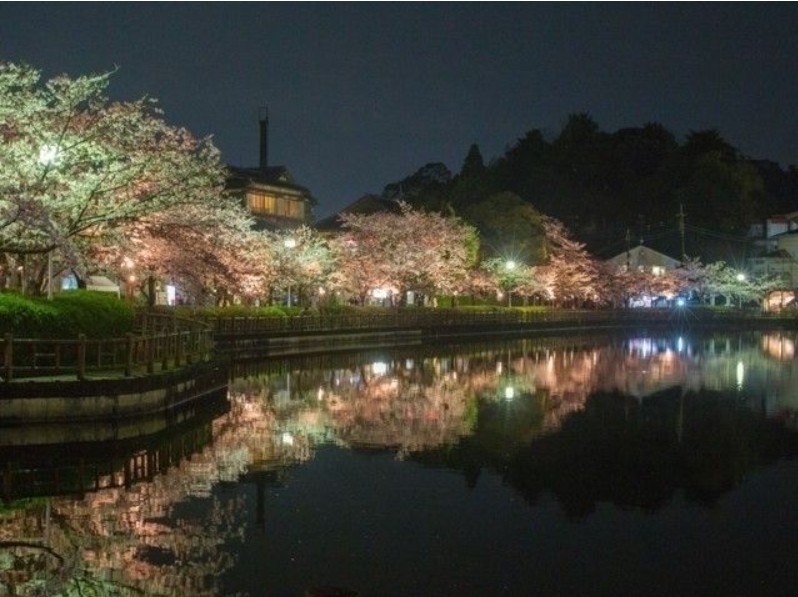
Are sakura edible?
Sakura are so popular, it would be odd not to find them in food during spring! Traditionally, sakura petals are dried or marinated in vinegar, then salted and used in drinks or added to some dishes. Most of the time, they are brewed with some green tea or simply into hot water.
Among traditional Japanese dishes that fuse sakura petals with them, you will generally find onigiris, inari-zushis, yokan (a kind of jelly made of agar agar and red bean paste) and much more. However, the most famous sakura dish most likely is the sakura-mochi. Unlike traditional mochi, this one is pink and wrapped in a sakura leaf. But there’s more to that: it’s also famous because there are two ways of making it, that differ between the Kantō and the Kansai. For the Kantō-style, the rice cake is made of rice flour while the Kansai-style of this dish uses glutinous rice flour to make the rice cake. If you’re a food lover, it’s probably the best time of the year to discover new flavours!
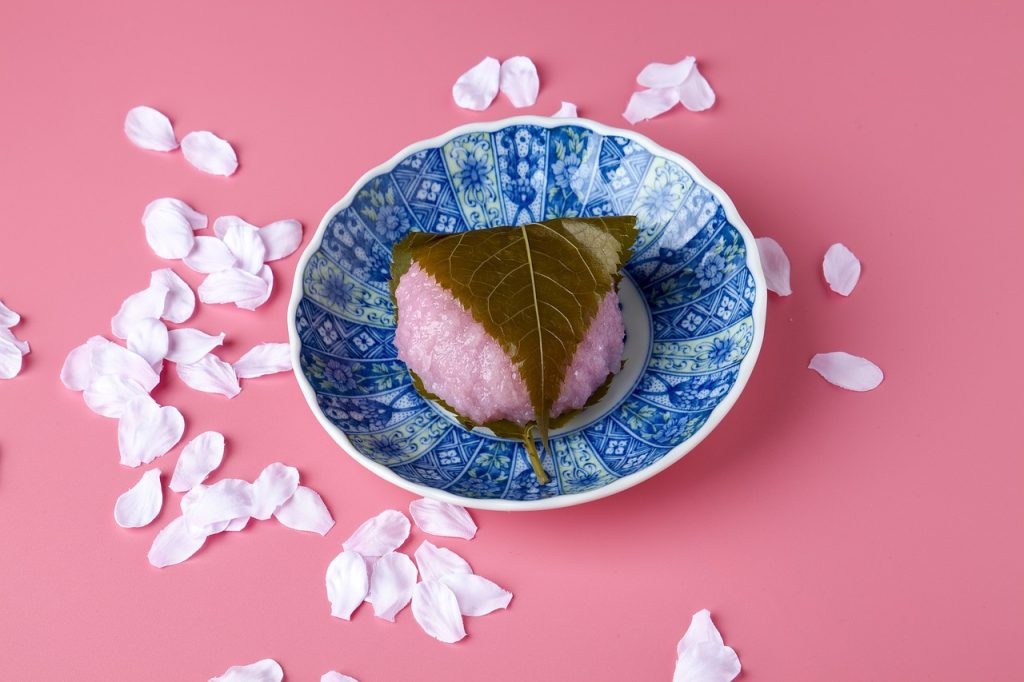
Sakura representations in Japan
Cherry blossoms are so representative of Japan that anyone could think sakura are the emblem of the country. However, the actual emblematic flower of Japan is the chrysanthemum simply because it is the imperial family’s symbol. So, even if cherry blossoms are a lot more depicted than the chrysanthemum when it comes to Japan, on the back of ¥100 coins, for example, don’t be fooled! On another note, the word “sakura” when written in katakana (サクラ) tends to refer to something fake.
Cherry blossoms… but not in spring!
Many people think that the only chance they have to enjoy sakura in Japan is in spring. However, there is a type of cherry trees whose flowers bloom twice in a year! They are called jūgatsuzakura (十月桜) or fuyuzakura (冬桜) and make about ⅓ of cherry trees in Japan. Typically, they bloom once in spring and a second time between the end of October and the beginning of January.
Study in Japan during Sakura season
With SNG, you can have the chance to come study Japanese while enjoying incredible sakura scenes. Whether you’d like to come for a term, one year or even two! Our multilingual team will support you all through your application and your stay in Tokyo. Come join us!
